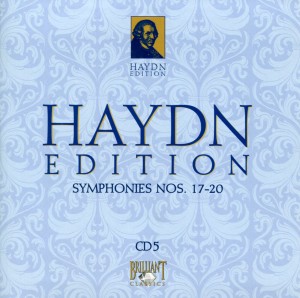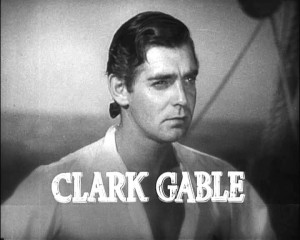 You know the kind of music Hollywood uses as the soundtrack in a period piece, a movie set in a bygone era?
You know the kind of music Hollywood uses as the soundtrack in a period piece, a movie set in a bygone era?
It’s stuff like what’s on CD 5, starting with Symphony No. 17 in F.
The only thing missing is Cate Blanchett.
Or Geoffrey Rush.
And a whole lot of powdered wigs and brightly colored clothes.
Think Jane Austin. Or George Washington. Or Mutiny on the Bounty, in which case an appearance by Clark Gable would be in order. (Forget Charles Laughton, though. I don’t want Captain Bligh to invade my reverie this morning.)
 Here’s the point. When people think of the era of powdered wigs and formal, if not visually stunning, minuet or contredanse allemande dancing, they likely think of spirit that imbues Haydn’s Symphony No. 17 in F, although – to be sure – they’d more likely be hearing a quartet, not a full symphony, at these social gatherings. Still, there’s something about Symphony No. 17 in F that smacks of a gathering of that sort. It has a Late Baroque feel to it. All that’s missing is a harpsichord, for which I am immeasurably grateful. That instrument grates on my nerves like fingernails on a chalkboard.
Here’s the point. When people think of the era of powdered wigs and formal, if not visually stunning, minuet or contredanse allemande dancing, they likely think of spirit that imbues Haydn’s Symphony No. 17 in F, although – to be sure – they’d more likely be hearing a quartet, not a full symphony, at these social gatherings. Still, there’s something about Symphony No. 17 in F that smacks of a gathering of that sort. It has a Late Baroque feel to it. All that’s missing is a harpsichord, for which I am immeasurably grateful. That instrument grates on my nerves like fingernails on a chalkboard.
The three-movement Symphony No. 17 in F “may have been written between Continue reading

